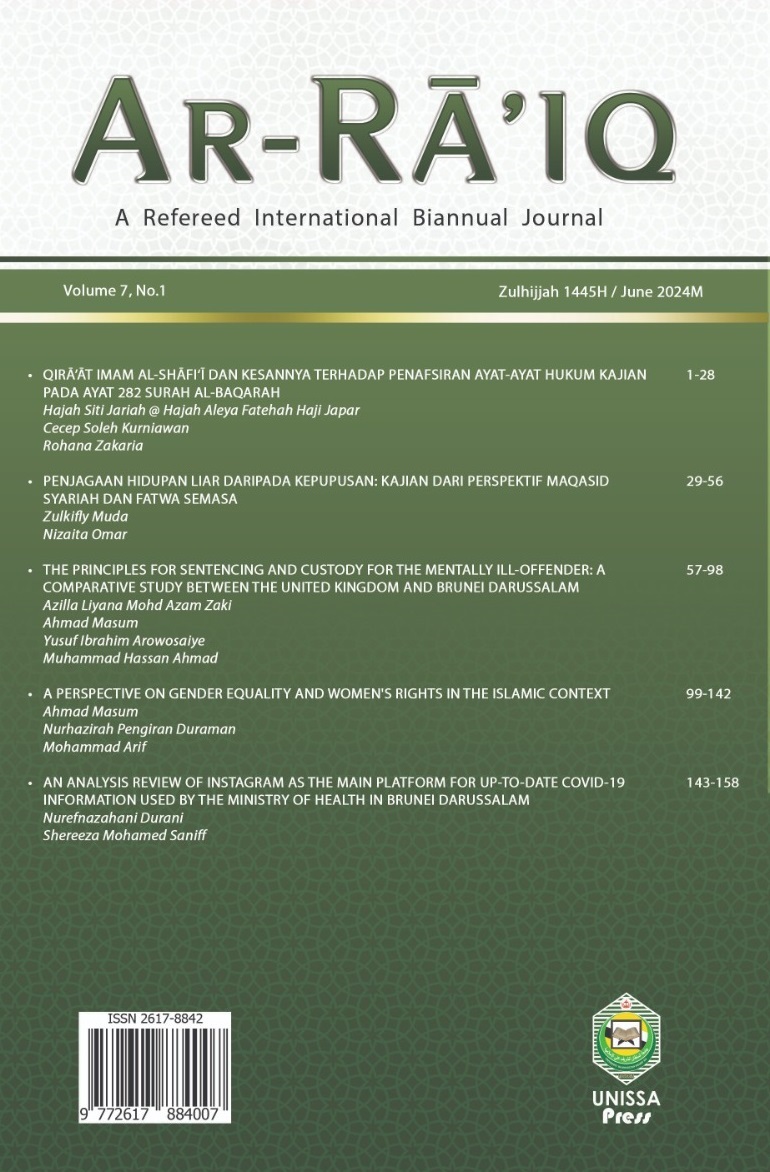Published 2024-06-30
Keywords
- Islamic concept,
- human rights,
- gender equality,
- Women's rights,
- CEDAW
How to Cite
Copyright (c) 2024 UNISSA Press

This work is licensed under a Creative Commons Attribution 4.0 International License.
Copyright NoticeAbstract
As viewed through an Islamic perspective, gender equality and women's rights come about through the interaction of the religious, cultural, legal, and socio-political dimensions of the context. The principle of gender equality articulates the assertion that men and women are equal before God; as stated in the Qur’an (Surah Al-Hujurat 49:13), the Qur’an and the Hadith endorse this principle. More importantly, manoeuvring around socio-cultural norms and practices have, in some instances, exempted the very essence of the realization of this principle in most Muslim countries' frameworks, an example being Bangladesh, Saudi Arabia, and Afghanistan. The United Nations Development Program, UNDP states that women spend eight times more hours than men on unpaid care work. In 2022, the Labor Force Survey has revealed that only 42% of working-age women are in the labour force, and most of those in the labour force earn much less than men. Just 13% are female landowners, indicating significant inequalities in these two major areas of economic focus. What the article means to achieve is to outline and highlight a general understanding of the relationship between gender equality and women's rights within the Islamic context, therefore bringing out the complexity and subtlety that surrounds the roles that women play within Islam through qualitative research and conceptual exploration in this article.



